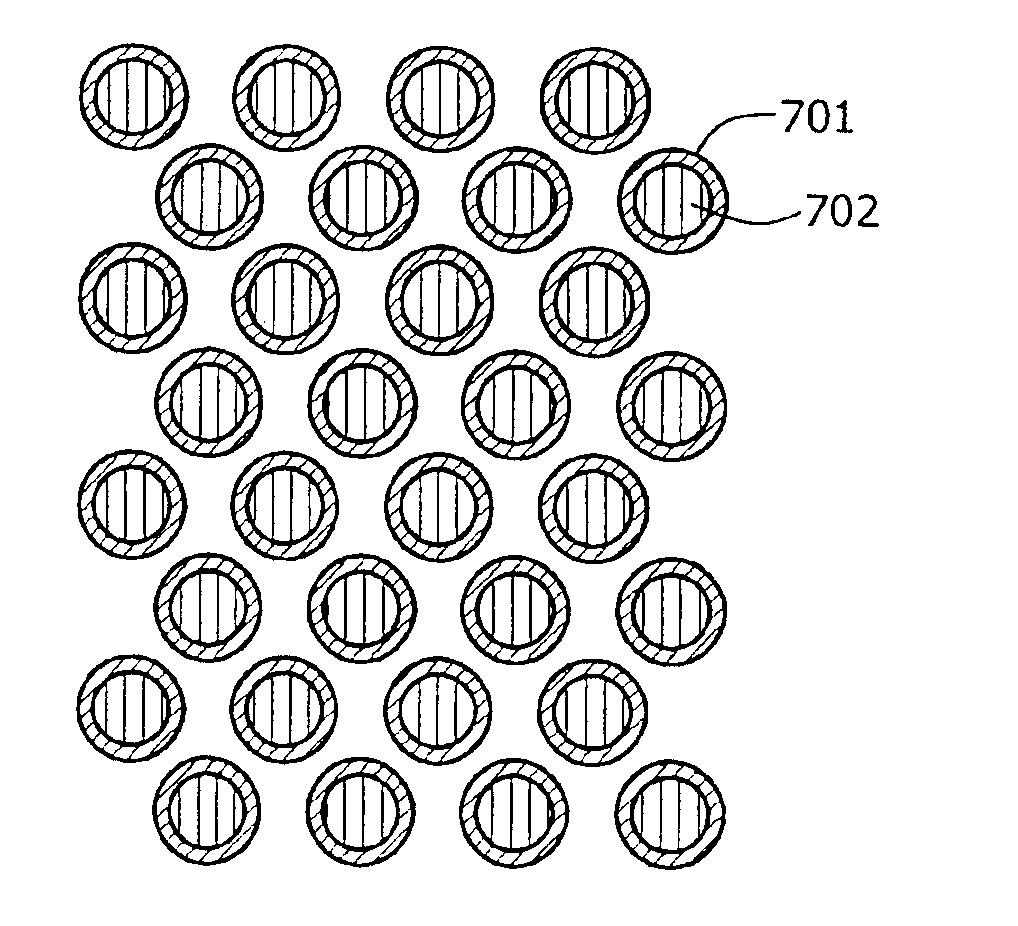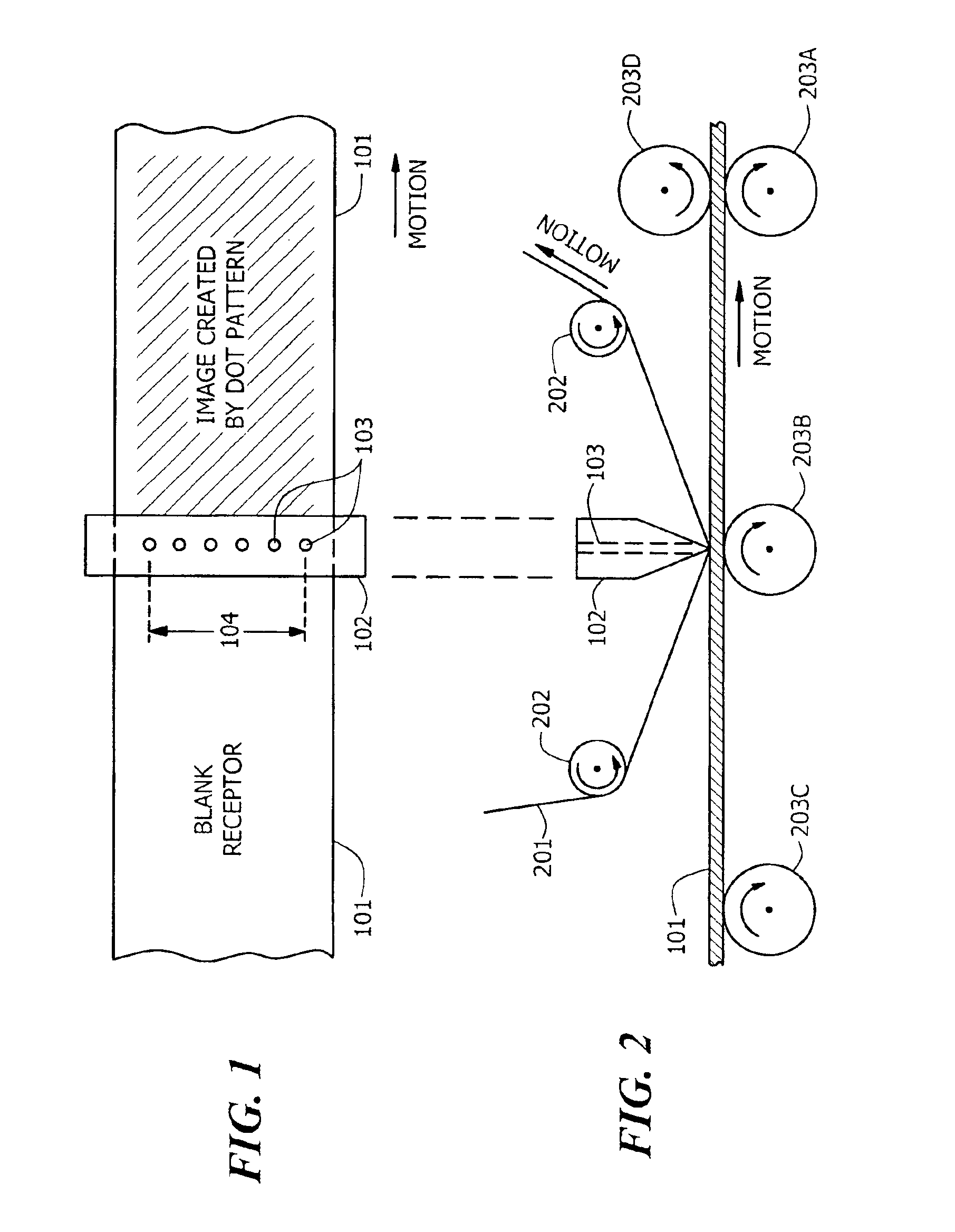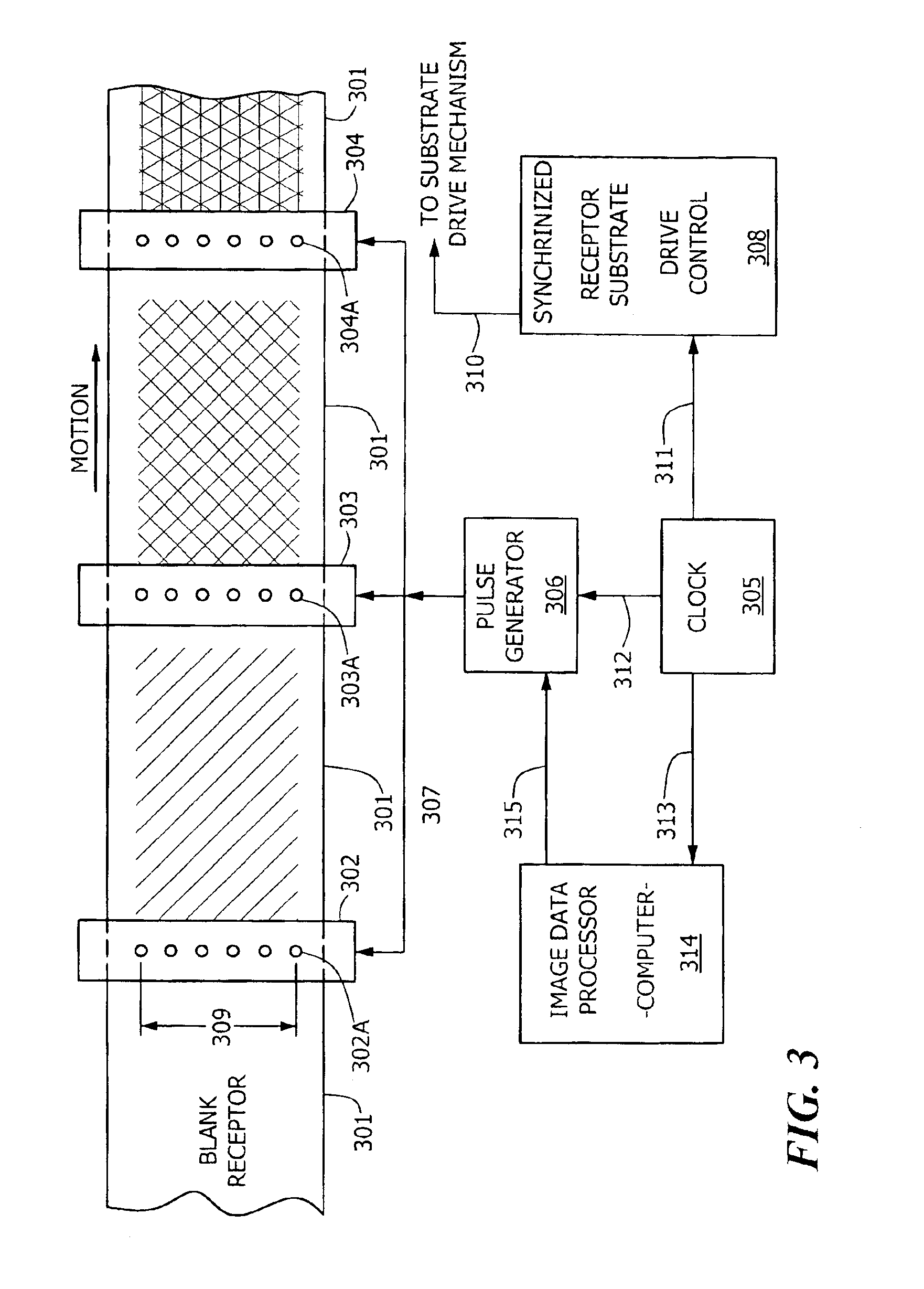[0015]Embodiments of the present invention relate to a
system, apparatus,
computer program product and / or method, for enhancing a printed
color image as perceived by a human viewer. The image is composed of a plurality of superimposed regular dot-patterns upon a planar surface. The surface moves in a first direction parallel to the surface. Each dot pattern has a fixed
spatial frequency in the first direction (dots are substantially
equidistant from each other in the first direction) and another fixed
spatial frequency in a second direction (dots are substantially
equidistant from each other in the second direction) perpendicular to the first direction. These two spatial frequencies for a particular dot pattern need not be equal and are not equal to spatial frequencies of the other pattern. Each one of the patterns is monochromatic and different in color from that of each of the other patterns. One of the regular dot patterns is intentionally misregistered with respect to another of the patterns in directions only parallel to and perpendicular to the first direction by virtue of its having different spatial frequencies from that of the other pattern in both the first direction and second direction, thereby obtaining a pattern misregistration. The pattern misregistration is controlled to obtain a particular misregistration having the property of enhancing the
color image while the particular misregistration remains imperceptible to the viewer. The misregistration is designed to subdue color variations within an image, and from image to image, while producing no image artifacts visible to the viewer. Enhancing the color image includes enhancing the color uniformity of the image.
[0018]In a further feature, an improved color image on a movable planar surface using multiple arrays of dots is created. The surface moves in a first direction parallel to the surface. The image has at least enhanced color uniformity as perceived by a human viewer of the image. A first one of the arrays is created in a first color as a first
colored array on the surface; the dots forming the first
colored array are spaced at first predetermined distances from each other. A second one of the arrays is created in a second color as a second
colored array generally superimposed on the first colored array; the dots forming the second colored array are spaced at second predetermined distances from each other. All of the first predetermined distances which are parallel to and perpendicular to the first direction and all of the second predetermined distances which are parallel to and perpendicular to the first direction are controlled to result in a particular intentional misregistration between the dots of the second colored array and the dots of the first colored array, the misregistration having the property of improving the color uniformity of the image for the viewer. A third one of the arrays is created in a third color as a third colored array, generally superimposed on the second colored array and said first colored array. The dots forming the third colored array are controlled to be spaced at third predetermined distances not aligned with the first or second array. When the colors printed are yellow,
magenta and cyan, the predetermined distances chosen for printing yellow and cyan can be the same. (This is because the spectral overlap between yellow and cyan is typically insignificant.
Magenta, the color obtained by absorbing
green light, is the “middle” color in the spectrum and overlaps the others on both sides.)
[0021]In a particular embodiment, each element of the cyan-printing head and each element of the yellow-printing head deposit 400
dots per inch on the surface within the
field of view of the image, with each respective one of the 400
dots per inch from the yellow-printing head intending to be deposited upon or directly upon its corresponding one of the 400
dots per inch from the first print head. Since there is minimal spectral overlap between these colors, although being subjected to a dot-on-dot procedure, precise registration of the yellow and cyan dots is unnecessary. Each element of the print head which prints
magenta, is controlled to deposit 266 dots per inch on the surface throughout the
field of view. In this embodiment, the first and third thermal print head's predetermined number of elements is 300 per inch each, and the second thermal print head's predetermined number of elements is 400 per inch. The intermingling of a column of 300 dots per inch by a row of 400 dots per inch pattern with a column of 400 dots per inch by a row of 266 dots per inch pattern over the
field of view in this manner has the property of enhancing color uniformity of the image for the viewer, each one of the dots being individually indistinguishable to a
naked eye of the viewer. Other colors and combinations of numbers of dots can be used.
[0022]It is therefore advantageous to use embodiments of the present invention in the production of images obtained through digital photography whereby a
high rate of image production and enhanced image uniformity are achieved, while misalignment problems are minimized.
[0023]It is thus a general object of the present invention to provide an improved technique for printing images.
[0024]It is another general object of the present invention to provide an improved technique for creating color images produced through digital photography.
 Login to View More
Login to View More  Login to View More
Login to View More 


